Just can’t get your content marketing program to work?
Fret not. Here’s a list of 17 tips that’ll improve your content marketing and help you get more visitors, leads, and sales:
- Know who you’re creating content for
- Target topics with search traffic potential
- Tackle competitors’ best-performing topics
- Prioritize topics using “business potential”
- Match the 3 Cs of search intent
- Create a content calendar
- Promote your content
- Design shareable images
- Repurpose your content
- Add “link triggers”
- Update your content
- Do blogger outreach
- Be opinionated
- Shine new light on industry with other lenses
- Don’t obsess over word count
- Manage a portfolio of content
- Create content hubs
A conversion rate optimization (CRO) agency writes about CRO and attracts other CRO professionals. But CRO professionals don’t need CRO services. So the agency’s blog attracts no useful leads, and the agency declares that content marketing doesn’t work.
But if the CRO agency had taken a few steps back and written down who it was trying to target, it would be clear what kind of content it had to create. Not “advanced CRO tactics,” but “how to optimize your homepage to get more leads.”
That is why the first step of creating any content strategy is to be clear on who you’re creating content for.

If you already know who you’re targeting, make sure to get it down in writing and share it with your entire team. Otherwise, use the template below to figure it out for your business.
Recommended reading: How to Create Detailed Buyer Personas for Your Business [Free Persona Template]
Traffic from email or social media is a great boost, but it is short-lived.

However, if you create content around topics that people are constantly searching for in Google, then there’s guaranteed continued interest. For as long as your article ranks in Google, you’ll receive consistent, passive search traffic.

Here’s how to find these topics:
- Go to Ahrefs’ Keywords Explorer
- Enter a topic relevant to your industry
- Go to the Matching terms report
- Switch to the Questions tab
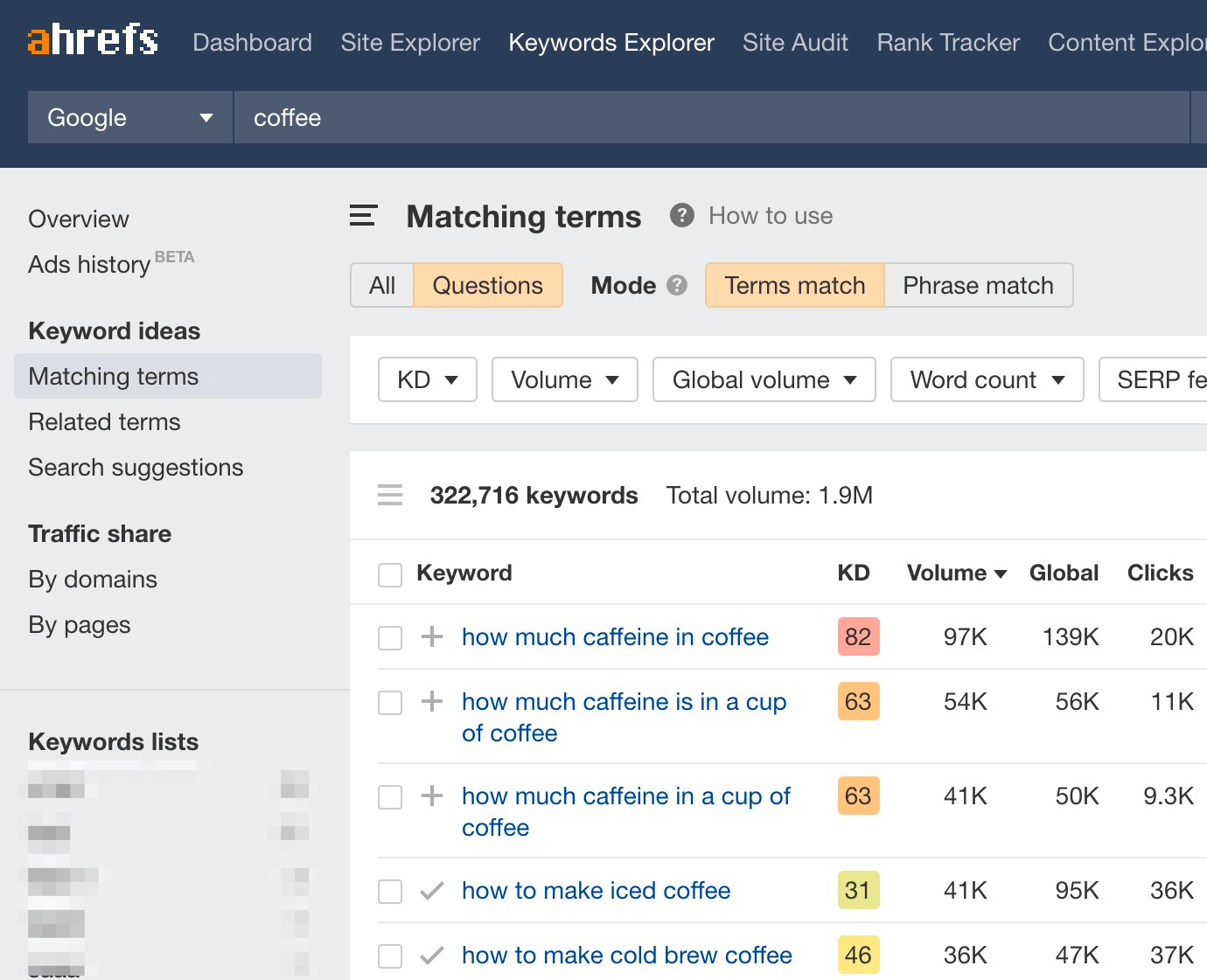
Here, you’ll see over 300,000 potential topics you could target. Look through the list and pick out those that are relevant to your website.
Recommended reading: Keyword Research: The Beginner’s Guide by Ahrefs
Wouldn’t it be amazing if you knew which of your competitors’ articles got the most traffic so that you could replicate their success?
Well, good news. You can.
Here’s how:
- Go to Ahrefs’ Site Explorer
- Enter a competitor’s domain
- Go to the Top pages report
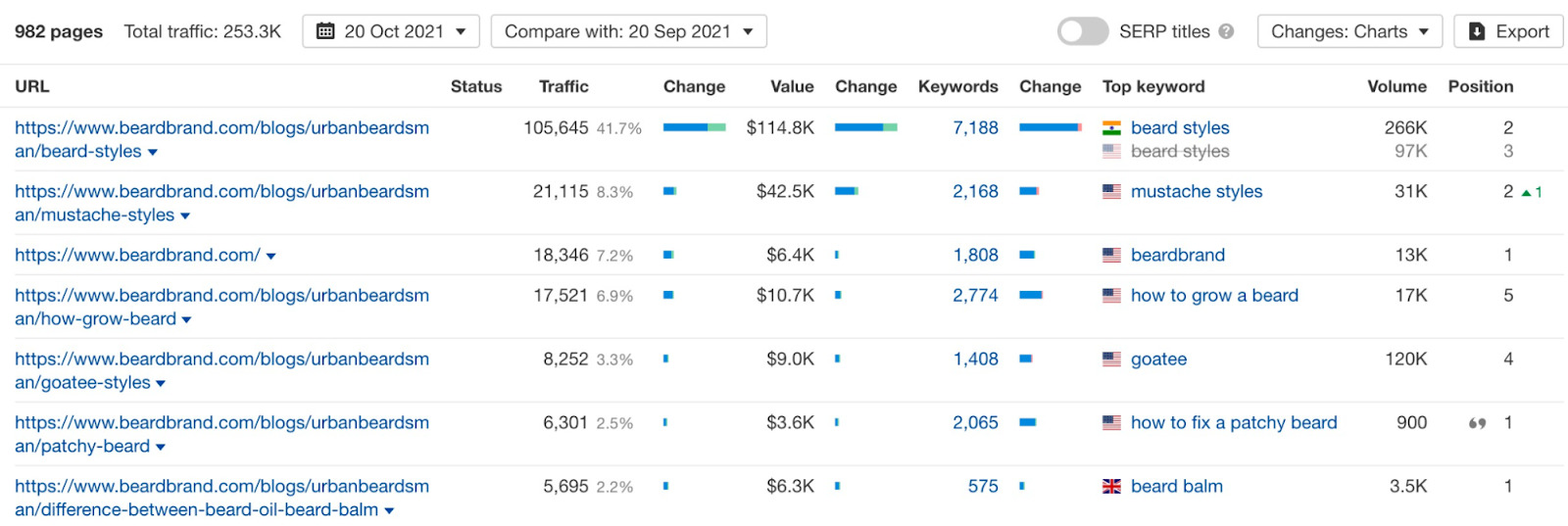
You’ll see all the pages ranked by organic traffic, plus the keyword that sends each page the most traffic.
For example, we can see that Beardbrand’s article on beard styles gets an estimated 105,000 organic visits per month. The keyword sending it the most traffic is “beard styles.”
If we owned a competing ecommerce store, we could tackle this topic too.
Search traffic alone is a vanity metric. If it doesn’t improve your business (i.e., more leads or more revenue), then getting more search traffic is pointless.
At Ahrefs, we score topics using “business potential.”
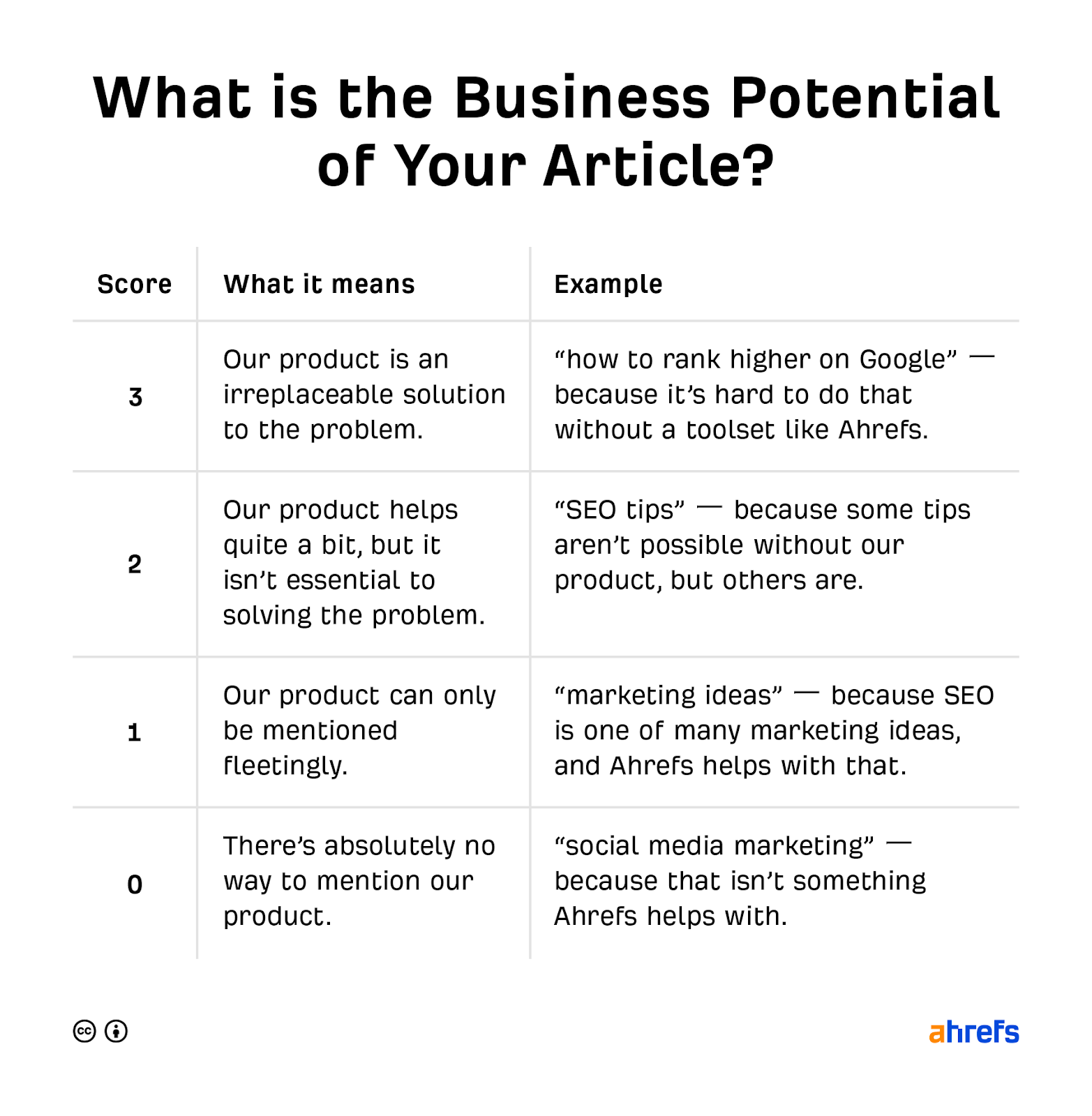
Pairing “business potential” with “search traffic potential” keeps us focused on creating content that actually drives growth.
This is why our blog revolves around SEO and content marketing and not topics like “reverse image search.”

Even though it is a popular search query (~1.5 million monthly searches) and has the potential to drive tons of traffic, it has nothing to do with our product at all (“0” business potential).
Google’s aim is to provide its users with the most relevant search results for any search query. So, to rank high on Google, you need to show that you’re the most relevant search result.
That means matching search intent—the why behind a search query.
We can look at Google’s search engine results pages (SERPs) to figure out search intent. Do this by searching in Google for your target keyword, then analyze the top-ranking pages for the three Cs of search intent.
A. Content type
Content types usually fall into one of five buckets: blog post, product, category, landing page, or video. For example, if we search for “how to learn hangul,” we can see that the top few results are mostly videos.
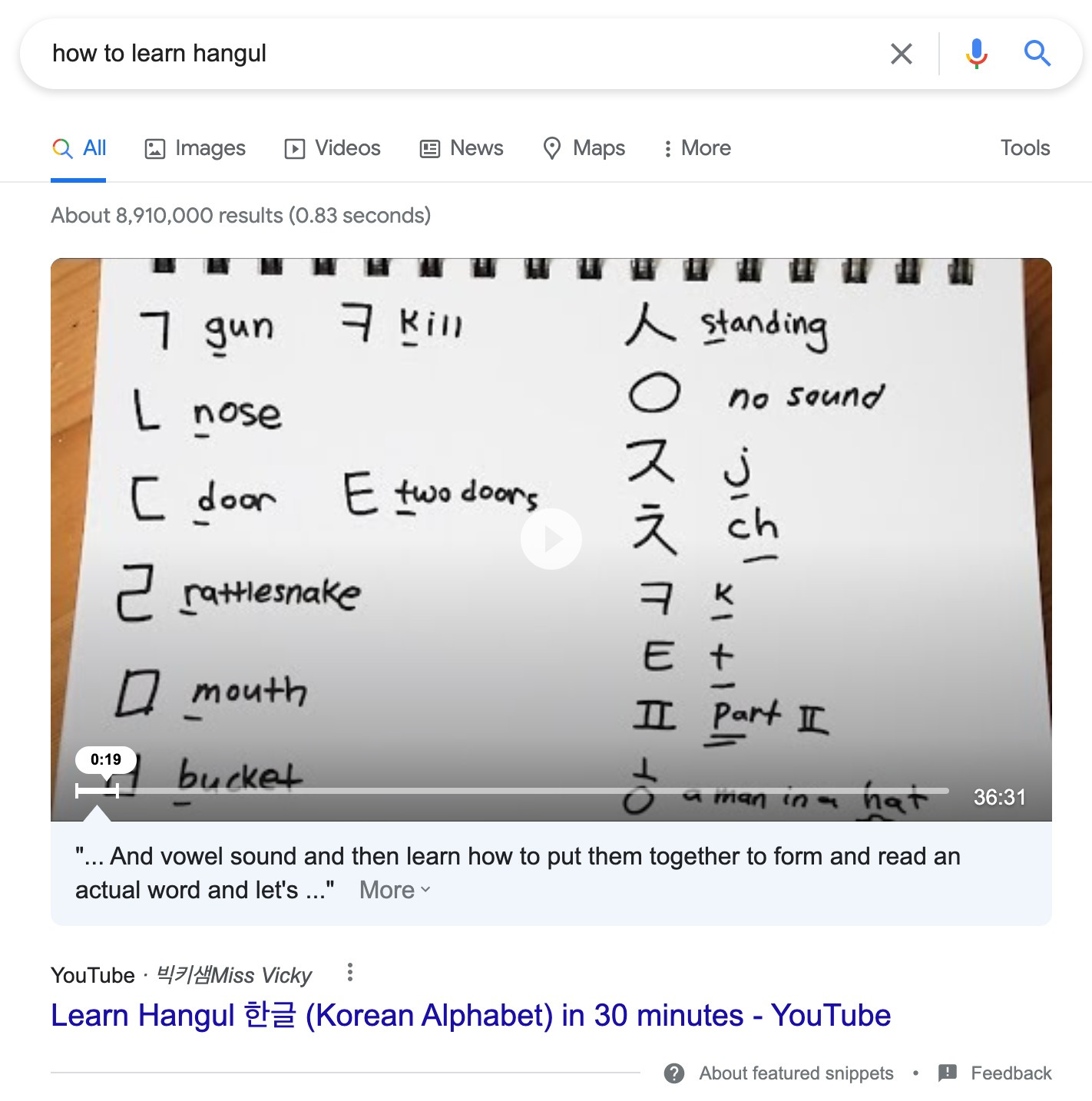
If you want to rank for this keyword, you’ll likely have to create a video.
B. Content format
Content format applies mostly to blog posts, as they’re usually either how-tos, listicles, news articles, opinion pieces, or reviews.
For example, the top-ranking results for “best home workouts” are mostly listicles:

Whereas the top results for “how to learn Korean grammar” are mostly how-tos and guides:

To stand the best chance of ranking, follow suit.
C. Content angle
Content angle refers to the main “selling point” of the content. For example, people searching for “how to make sangria” want the recipe to be easy.
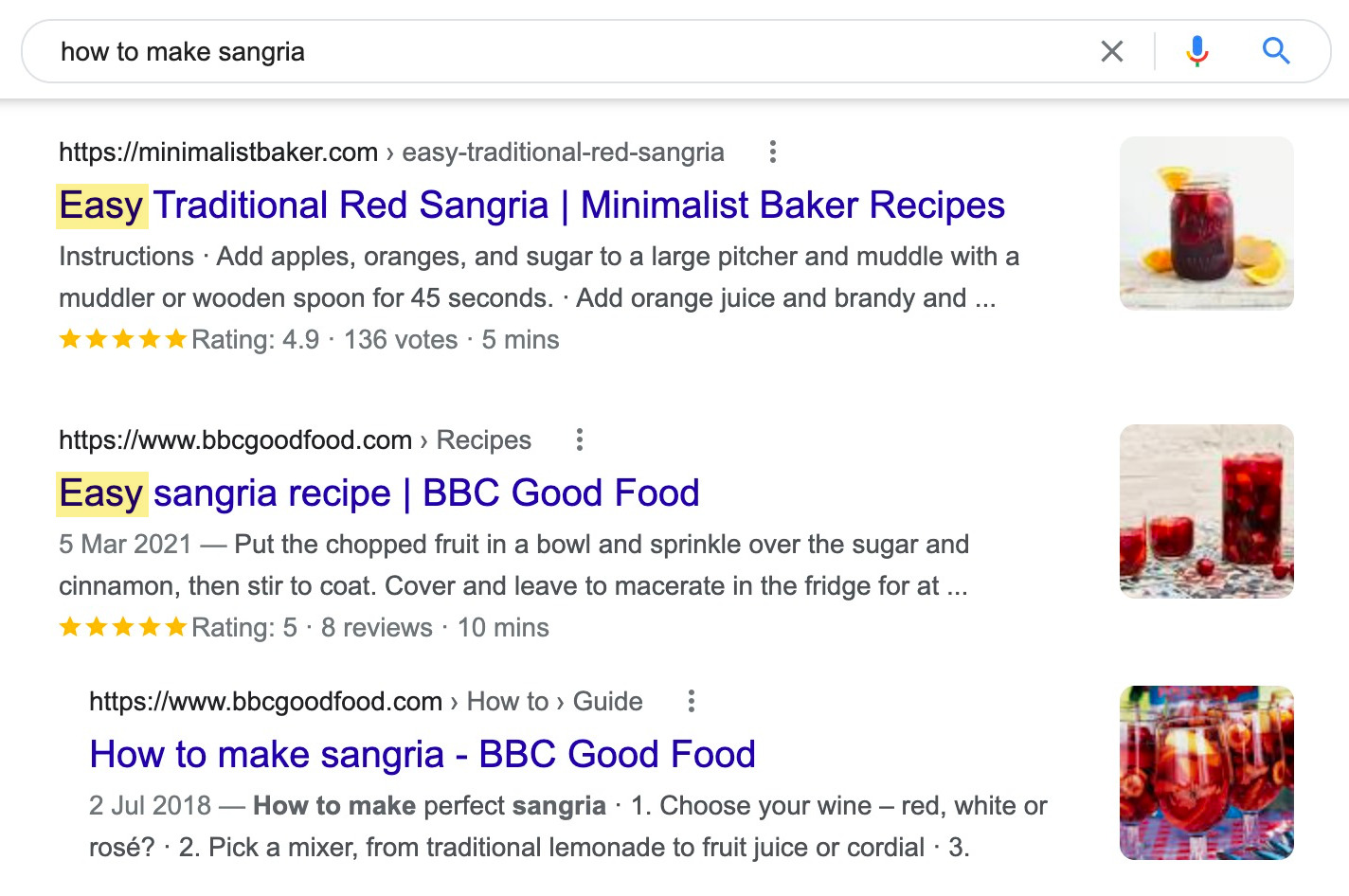
Recommended reading: What is Search Intent? A Complete Guide for Beginners
We keep track of all our publishing efforts using a content calendar:

Each calendar entry also lists information about an individual content piece, such as:
- Topic
- Author
- Contributors
- Status
- Due date
- Images
- URL slug
- Category
And so on.
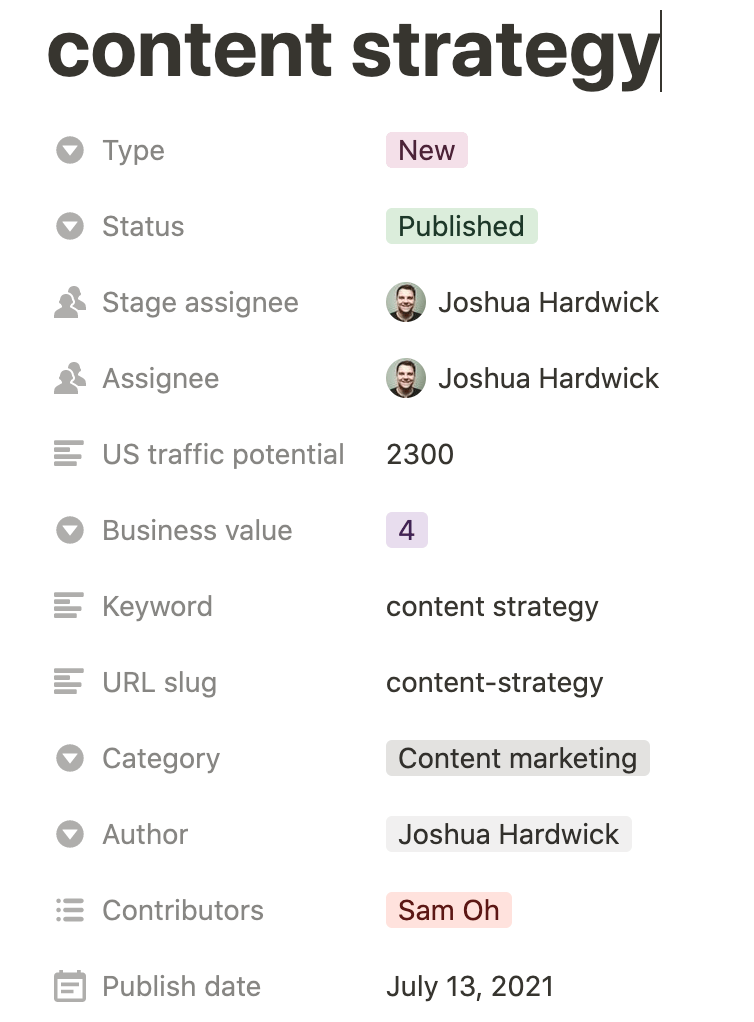
This keeps everyone aligned on the entire content management process. The editor and every contributor know what stage they’re at, when the deadline is, and what needs to be done next.
This is the reason why we have been able to publish two or more blog posts every week for the past few years.
Even if you’re a solo content marketer, a content calendar keeps you honest about the process. No more writing only when inspiration strikes. Commit to a schedule and publish.
Recommended reading: How to Create a Content Calendar That Works for You
If you don’t put your content in front of people who care, your newly published content will be practically invisible.
At Ahrefs, we promote every piece of content we publish. At the minimum, we:
- Send new blog posts to our newsletter subscribers.
- Share it on all our social accounts (Facebook, Twitter, LinkedIn).
- Reach out to people we mention in our content.
- Run ads (Facebook, Twitter, Quora, etc.).
You’ll have to do at least this much to get your content out—or if you’re a new site, even more. We recommend following this content promotion checklist:
https://www.youtube.com/watch?v=PoVYweKH4ck
We’re big fans of creating custom images for our content. These images help simplify complex concepts and improve our content’s readability.

One of our custom images.
Plus, they make amazing content to share on social media. Even in a “boring” niche like SEO, images like this can go viral.
Looking for a complete SEO checklist for 2021?
Here’s one you can follow. pic.twitter.com/65brjXPBcg
— Ahrefs (@ahrefs) August 15, 2021
Our images are created by our in-house illustrators. But there’s no need for you to break the bank just to design them. Custom images don’t have to be museum-worthy to be shareable. After all, the popular blog WaitButWhy uses only stick figures and hand-drawn cartoons. Tools like Canva also make it easy to create one.
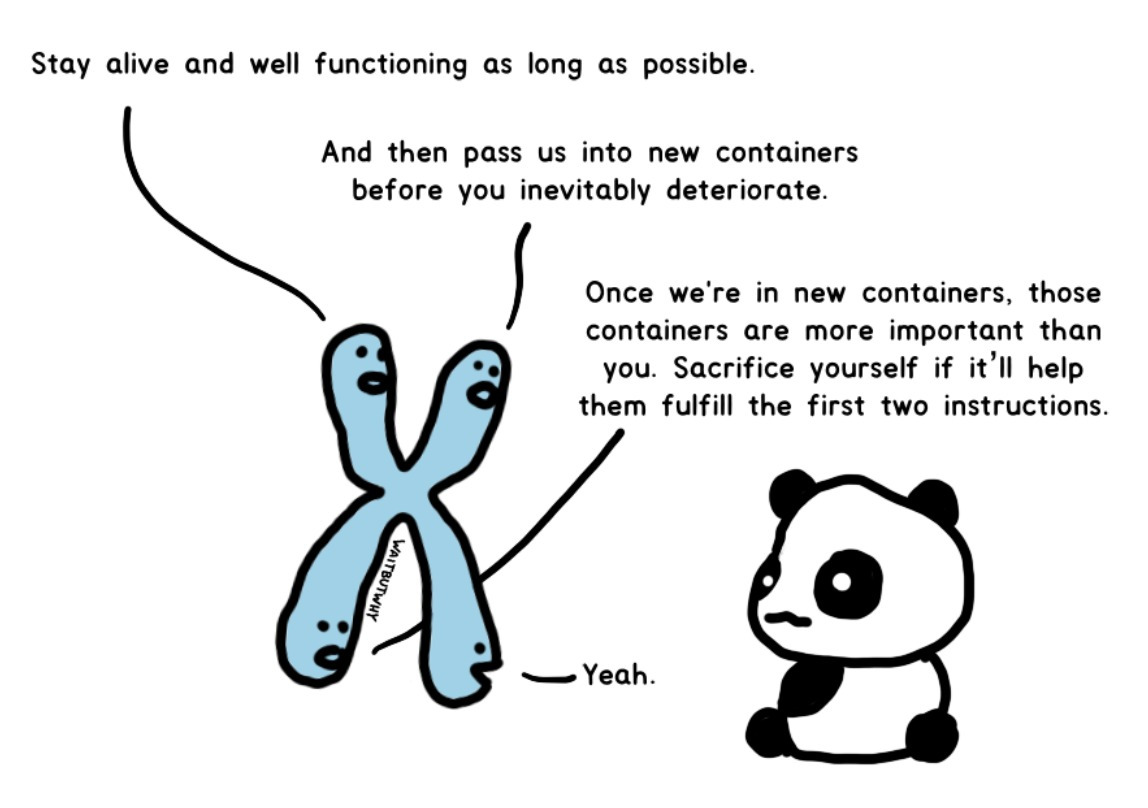
Before publishing, give your content a once-over. Pick out places where a custom image can add “value,” e.g., illustrate a concept better, push the narrative forward, keep the content entertaining, etc.
Make your content go the extra mile—turn it into multiple formats and share it on different platforms.
For example, we turned our guide to influencer marketing into a video and our video on getting more YouTube subscribers into a blog post.
We also:
As content marketer Ross Simmonds puts it, “Create once, distribute forever.”
Links are one of Google’s top three ranking factors. If you want your content to rank high, you need links.
One way—besides link building—is to bake “link triggers” (the reason why people link to a certain piece of content) into your content when writing. Not only will this make it easier to reach out and build links, but it can also help in naturally attracting them.
Here’s how you do it:
- Go to Ahrefs’ Keywords Explorer
- Search for your target keyword and scroll to the SERP overview
- Find a similar article with lots of referring domains
- Click on the number in the Backlinks column
- Skim the Anchor and target URL column for commonalities
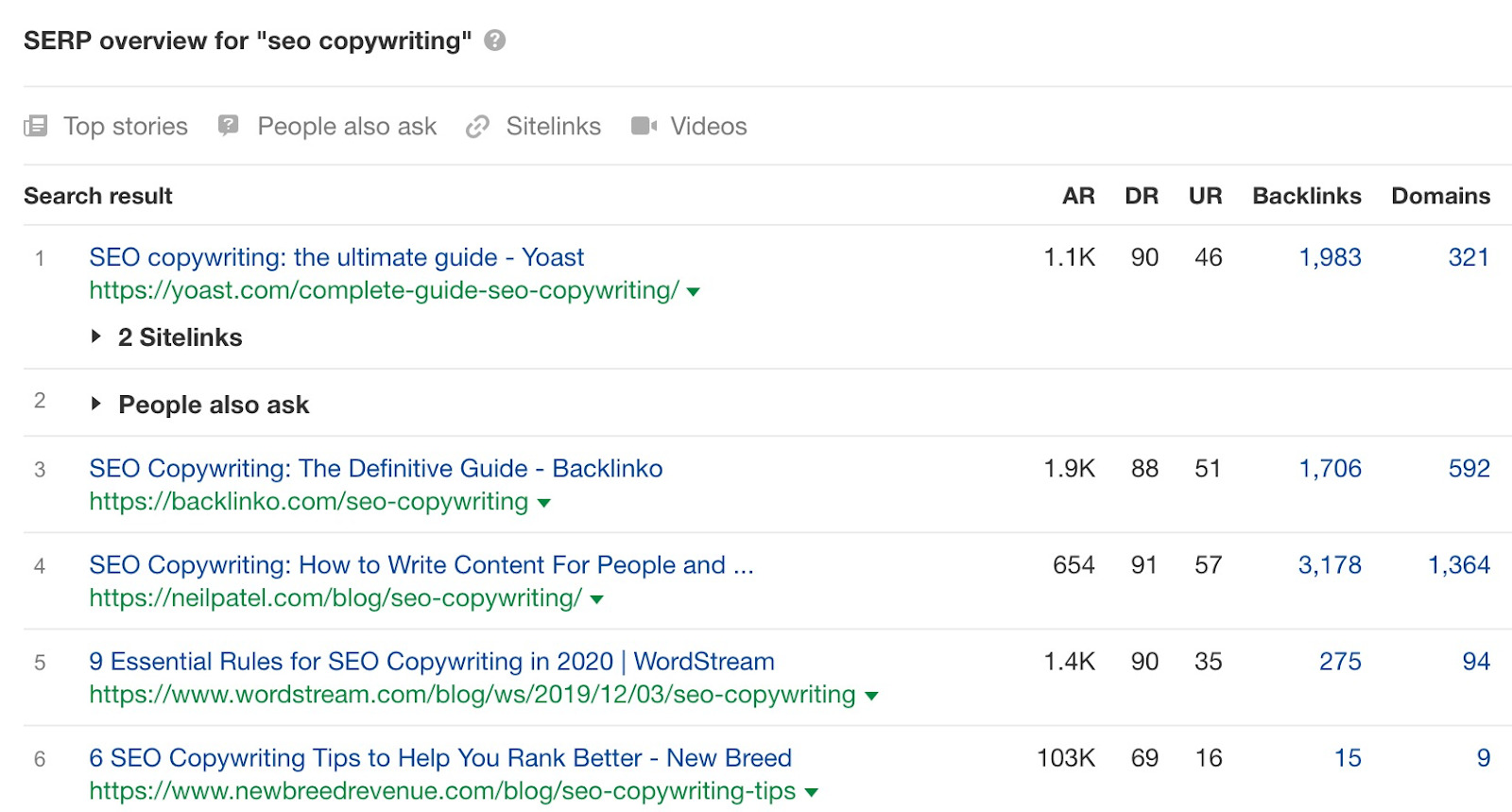
For example, if we do this for Backlinko’s (aka Brian Dean) post on SEO copywriting, we see quite a few people are linking because of some unique tips Brian wrote about—APP method, bucket brigades, etc.

If we write about the same topic, we’ll have to create our own unique SEO copywriting tips too.
Content can go “bad.” Information can become outdated, your target keyword’s search intent can change, and your rankings can drop.
When that happens, you’ll have to update your content.
Do you update everything? No, especially if you have hundreds of blog posts like us. Instead, you’ll have to prioritize. Do that by following this flowchart:

Alternatively, you can also use our free WordPress SEO plugin to check your site for underperforming posts. Then follow the guide below to learn the best way to republish your content.
Recommended reading: Republishing Content: How to Update Old Blog Posts for SEO
Blogger outreach is the process of putting your product or content in front of relevant bloggers and journalists by sending them personalized emails.
The goal: convince people with access to large audiences to talk about you and link to your website.
Now, blogger outreach is not spam. It’s not permission to scrape the emails of everyone in your industry and reach out to them begging for a link.
Instead, it’s something more long term. Sure, you want something from them—that’s why you’re reaching out. But you also want to network, remain on their radar, and befriend them. Rather than burn bridges for just a tweet, you’ll want to build on the relationship so that it may lead to something more in the future: a collaboration, partnership, etc.
So how do you do high-quality blogger outreach?
We wrote a start-to-finish guide on how to do it (and do it at scale too), so I recommend giving it a read.
Recommended reading: Blogger Outreach: How to Do It at Scale (Without Feeling Like a Jerk)
We all want our content to rank on Google and generate search traffic. But you can go too far playing that game. And unfortunately, many websites do. That’s why the SERPs are littered with pieces of content that look exactly like each other.
Don’t forget: Ranking is merely one part of the equation. Eventually, the reader needs to consume your content and buy into what you’re selling. If you’re just one of many, then there’s no reason to sign up for your email list, try a free trial, or purchase your product. You have to stand out.
Standing out means sharing an opinion. Wirecutter stands out from all other affiliate websites because it shares opinions, e.g., here’s the best non-stick pan, the best wireless earphone, the best DSLR camera, etc.
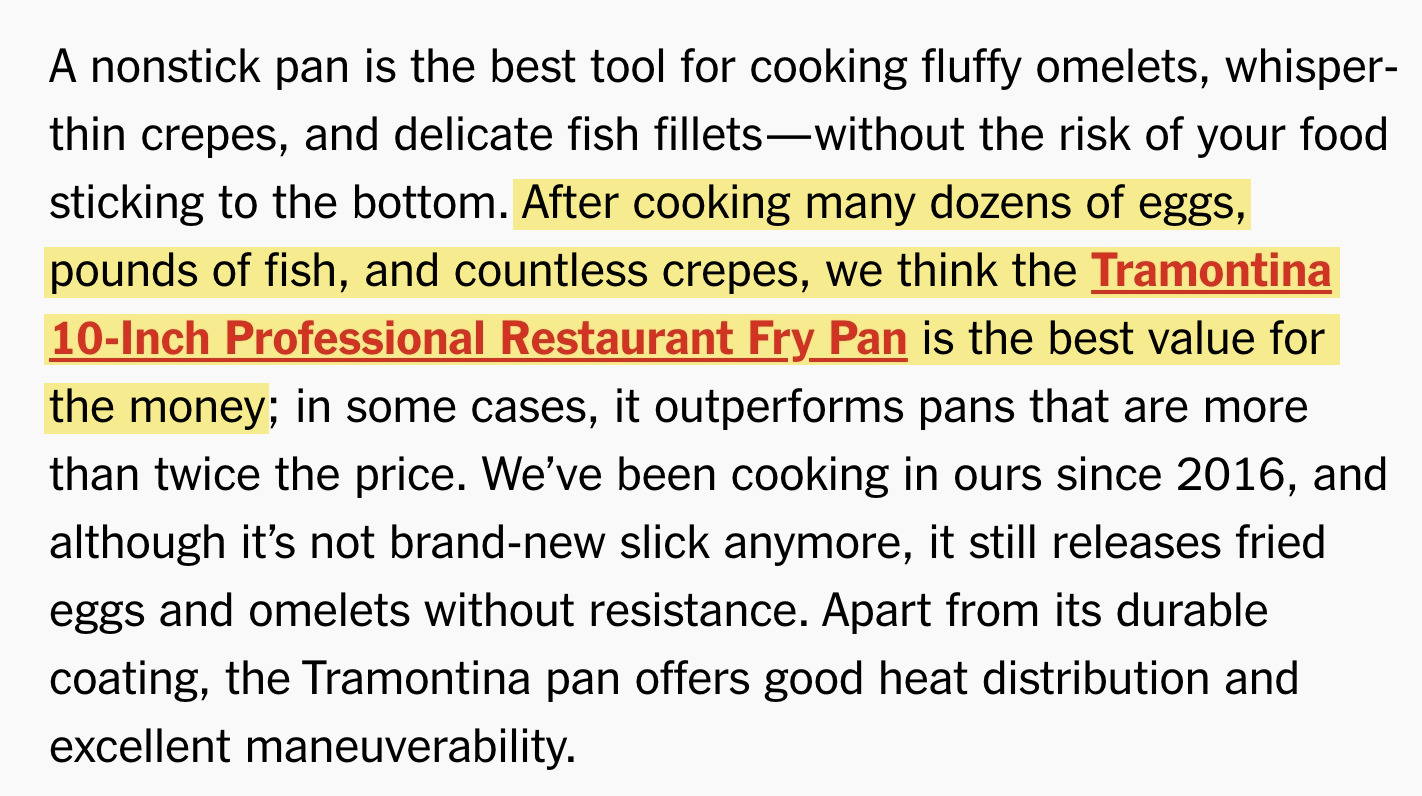
We regularly share our opinions on our blog too. For example, my colleague, Michal Pecanek, confidently stated that there are some popular SEO metrics that just don’t matter:
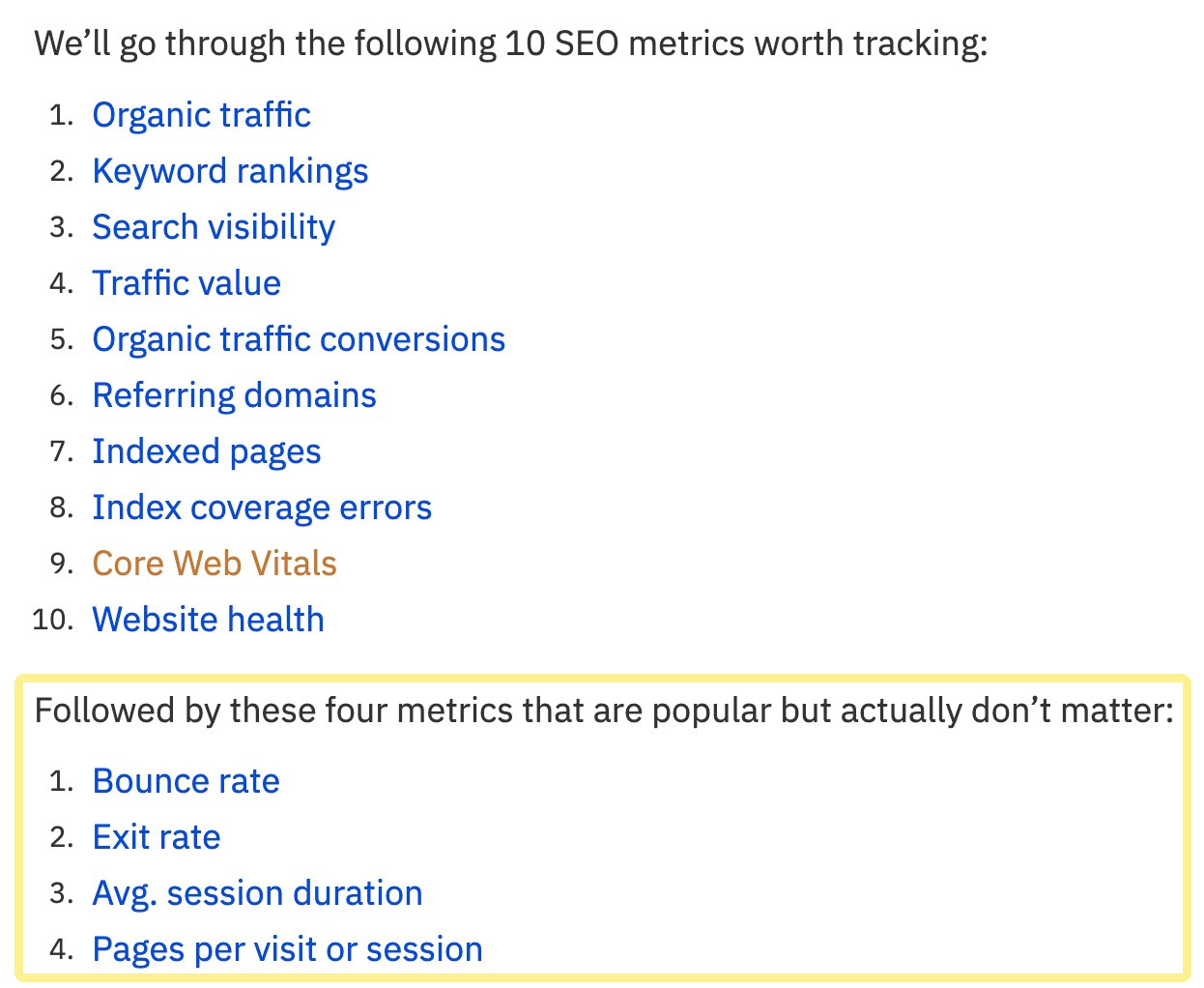
Finance is not really my thing. Yet I’ve read almost every article written by the finance writer Morgan Housel. You would too—if you read his articles:

He’s writing about finance, but it isn’t a borefest written in Wall Street language. He educates you from a variety of angles: history, psychology, biology, space, and war. Finance is merely the canvas he paints on; his brushes are the other lenses he uses to introduce you to the topic.
Your industry may be “boring,” but don’t let your content be.
Find another lens you can use to look at your industry in a new way. For example, Animalz wrote about content marketing from the lens of a black hole.
As Morgan puts it:
The key to persuasion is teaching people something new through the lens of something they already understand. This is critical in writing. Readers want to learn something new, and they learn best when they can relate a new subject to something they’re familiar with.
Reading a recipe page today means finishing the equivalent of Leo Tolstoy’s “War and Peace” before finally learning how to cook that three-minute dish.
Google’s ranking bias for recipe sites that share the chef’s entire life story via an Ayn Rand novel length of content prior to the actual recipe knows no bounds. Esp on mobile just give us the recipe I’m trying to shop not learn the history of the universe.
— Adam Singer (@AdamSinger) October 2, 2019
This happens because of the popular belief that longer articles mean more organic traffic. But according to our study of 900 million pages, there is a moderate negative correlation between word count and organic traffic for posts longer than 2,000 words.
In other words, the average 10,000-word post gets less search traffic than the average 2,000-word post.
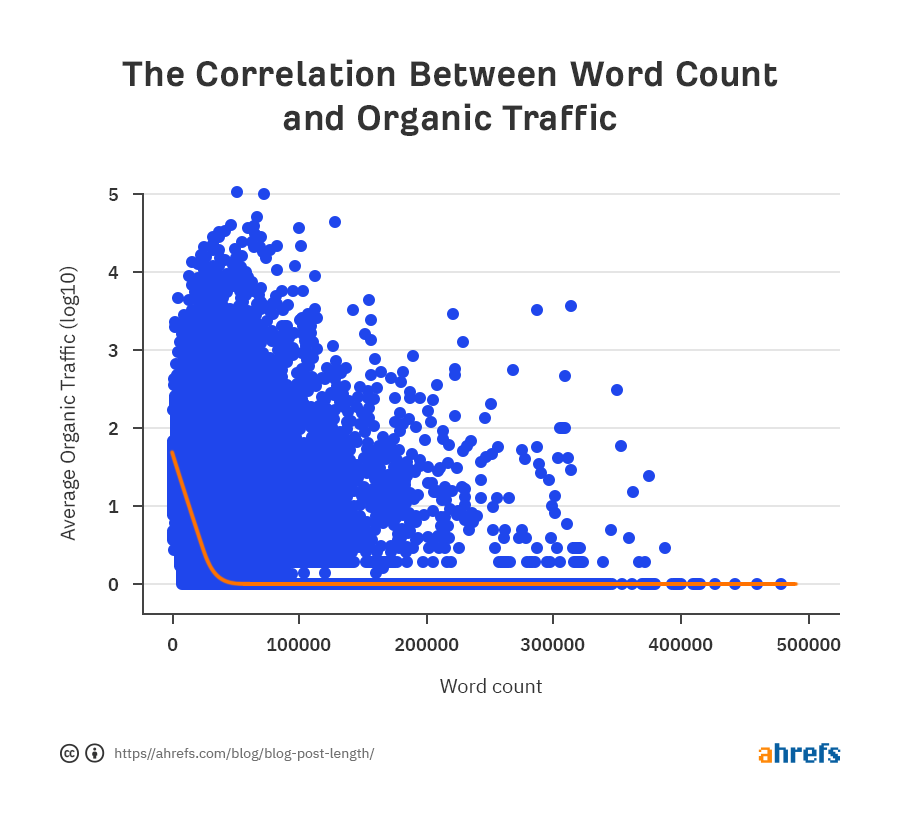
So stop obsessing over word count. Nobody wants to read longer content. Cover as deep as needed, cut out the unimportant aspects, and get to the point.
You cannot expect each piece of content you create to hit all your content marketing goals. Just like in finance, you need to diversify.
Depending on the goals and priorities of your business, you may need the following:
- Search-optimized content
- Linkbait
- Sales enablement content
- Thought leadership content
And more.
Even though ranking on Google is important for us, content designed for ranking isn’t the only type of content we create. We also publish data studies (for thought leadership and links), product updates (for retention), opinion pieces (for thought leadership), and free tools (for generating direct leads).
Recommended reading: Risk vs. Reward: How to Build a Diversified Content Portfolio
We recently organized our best free guides into one main starting point for all our readers.

This is known as a content hub. Content hubs are interlinked collections of content about a similar topic. Here’s how it looks like, in theory:

Since our blog is displayed reverse chronologically, a hub page like this helps our readers discover more of our content in an organized manner.
If you have tons of amazing content, consider creating hub pages to link all of them together.
Recommended reading: Content Hubs for SEO: How to Get More Traffic and Links
Final thoughts
I hope you’ve walked away from this post with a handful of actionable content marketing tips you can apply to your business.
Did I miss out on any cool content marketing tips? If you have any to share, let me know on Twitter.

